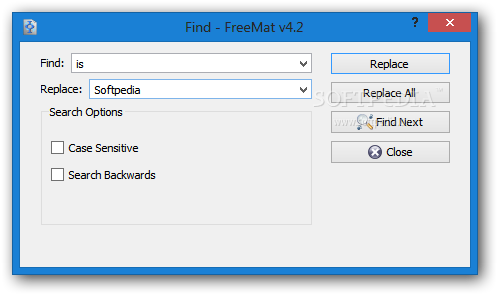

- Freemat defining functions software#
- Freemat defining functions code#
- Freemat defining functions download#
To sum it up, FreeMat is a complex and efficient application aimed to serve as a matrix-oriented development environment that supports a variety of processing functions, being able to work with shared libraries from several different languages. These functions are also accessible from the toolbar or the upper menus. Similarly, you can set or clear a breakpoint. You can run debugging operations, comment or uncomment a region, execute the current buffer, as well as perform ‘Step Over’ and ‘Step Into’ tasks. You can then input the contents of the file and resort to the program’s context menu to cut, copy, paste, find and replace items from the document. Create M files that you can analyze and editįreeMat allows you to open an existing M file or create a new one, with just a button press. The toolbar offers quick access to the main functions and components, allowing you to choose the ‘Stack’ you want to use or the system drive, from the corresponding menus. Clean and user-friendly appearanceįreeMat displays a sufficiently basic interface, featuring a working window and several panels, for instance ‘File Browser’, ‘History’, ‘Variables’ or ‘Debug’.
Freemat defining functions code#
The code build is more complicated and requires advanced knowledge, but you are provided with extensive documentation material on the subject.
Freemat defining functions download#
Subsequent to the download process, you can just run the installer then create your path using the ‘Pathtool’ while it may sound simple enough, you do need some experience in the field in order to successfully accomplish the task. The installation requires prior knowledge
Freemat defining functions software#
We plan to have functional JIT compiler in Freemat 4.FreeMat is a comprehensive piece of software designed to work as a development environment, similar to MATLAB or IDL, yet with none of the entailed costs. However, you can generate and optimize code on the fly and get near optimal performance (the only thing you can't do with JIT code is interprocedural optimizations). It is not perfect - the library is really huge and quite hard to compile and use. Java JIT seemed better suited for Java language. The general syntax for its use is y log(x) where x is an n-dimensional array of numerical type.Integer types are promoted to the double type prior to calculation of the log function. Samit and I looked at three jit compilers: Java JIT, Mono JIT, and LLVM. LOG Natural Logarithm Function Section: Mathematical Functions Usage Computes the log function for its argument. JIT compiled code works on the same data structures as the interpreter.Check for variable type changes between running JIT compiled code.If code cannot be compiled fall back to using the interpreter (slow, but at least you always get an answer).Compile code that would most benefit from speedup (loops, functions).Here's the current approach that FreeMat takes is: For such a code we can generate very fast machine code. In most cases variables have well defined type at runtime. However, code like the snippet above is rare. However, such implementation results in code that is not much faster than interpreted code. One can imagine using an object to represent variables (the object would carry a type and pointer to memory where data is stored) and assignement operator which would assign both value and type. What's the type of a? Compiler has to know the variable size and type to emit correct code. The main reason is that the variable types are determined at runtime. This is very tricky for dynamic languages such as Matlab (also Python, Perl, etc. The goal for using JIT (just-in-time compilation) is to speed up interpreted code by compiling it in run time. However, this is 21st century and we have better ways. The old view - almost always using clever indexing one can avoid loops.

Matrix or index operations on the other hand turn into internal function calls and are fast. The main reason is that I got conditioned (like the generations of matlab users) that loops are really slow because they have to be interpreted. I started using Matlab circa version 4 and I still cringe every time I have to write a loop in Matlab.


 0 kommentar(er)
0 kommentar(er)
